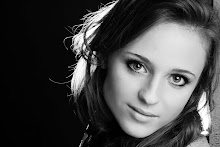Rough Guide Theory Task
Describe the objects/images/items
List keywords that come to mind
Now consider the context within your area and how these might differ if they were shown in another context
Object/product from a market stall
Crabs from a fish market stall, to buy and eat
Crabs are obviously natural living species that live within the sea and are made up of particles and enzymes. They look like mean creatures that you would never think you could eat because they have such a hard structured body and coating.
Coast, seaside, beach, textural, scuttle, hard, fragile, dangerous, dirty
Thinking of the context of where the crabs are sold, and if this were to change the context would differ greatly depending on the situation. If you were to find a crab in a department store (Selfridges), say in the food hall, you would expect to be buying ‘luxury’ crabmeat, which would not be cheap! Whereas to come across a crab in an art gallery, I think a person would have slightly confused thoughts and probably think the artists had some peculiar concept behind his work. However, I don’t think you will ever find a crab in an art gallery.
Object/product from a shop
A Print Block
I came across a little old antique shop, which you can find many of in Notting Hill. They sold these beautiful old-fashioned print blocks. They are square wooden blocks, with the section of the stamp being metal for the build up of ink to go. These print blocks were used when old-fashioned printing presses and typesetters were still used to print the newspapers.
Newspaper, prints, letters, delicate Imagery, beautiful, subtle, raised, design, pattern, detail
If a printing block was shown in another context, such as either an art gallery, market stall or department store, I don’t think the context would differ at all. A printing block would still have the same meaning because it is an antique and has a specific significance.
Object/painting/artwork/image from a museum
Museum of brands, packaging and advertising – graphics and labels from old packaging
I visited the Museum of brands, packing and advertising because it was in my area, Notting Hill, for the Rough Guide project. For this task, I decided to research into the graphics and labels from old packaging to new, how each product has changed over time through centuries. The graphics and labels on packaging are so detailed, intricate and beautiful but nowadays the products we buy are so boring! The products used to be attractive objects made from earthenware, wood, glass, paper and card, the to tin boxes and cans of the 19th century, to the new materials of aluminum and cellophane in 1920’s and 30’s. Then since 1950’s came the dramatic change and introduction of flexible plastics. The evolution of packaging has become increasingly more complex and dull.
Dull, vibrant, detail, colourful, intricate, beautiful, flexible
Having been researching graphics and labels of old packaging to new, if I were to move the old packaging to a market stall from the museum passersby would probably not even take a glance. The packaging might look old and battered, and nowadays everyone consumes up to date products, fashion garments and objects because they are satisfying their needs and stating their identities with modern possessions.
Comparisons between them
The reason why I researched into these objects for this task is because they all relate to each other in the Notting Hill area. Notting Hill and Portobello Road has always had antique shops, markets and food markets along the streets, which is how the crab, print block and old packaging relates to each other because they all show and state the history of the area, but not just the area, and you can kind of imagine what the area used to look like. However, “the area hasn’t really changed at all” said a market stallholder, whose family has worked there for generations. 
No comments:
Post a Comment